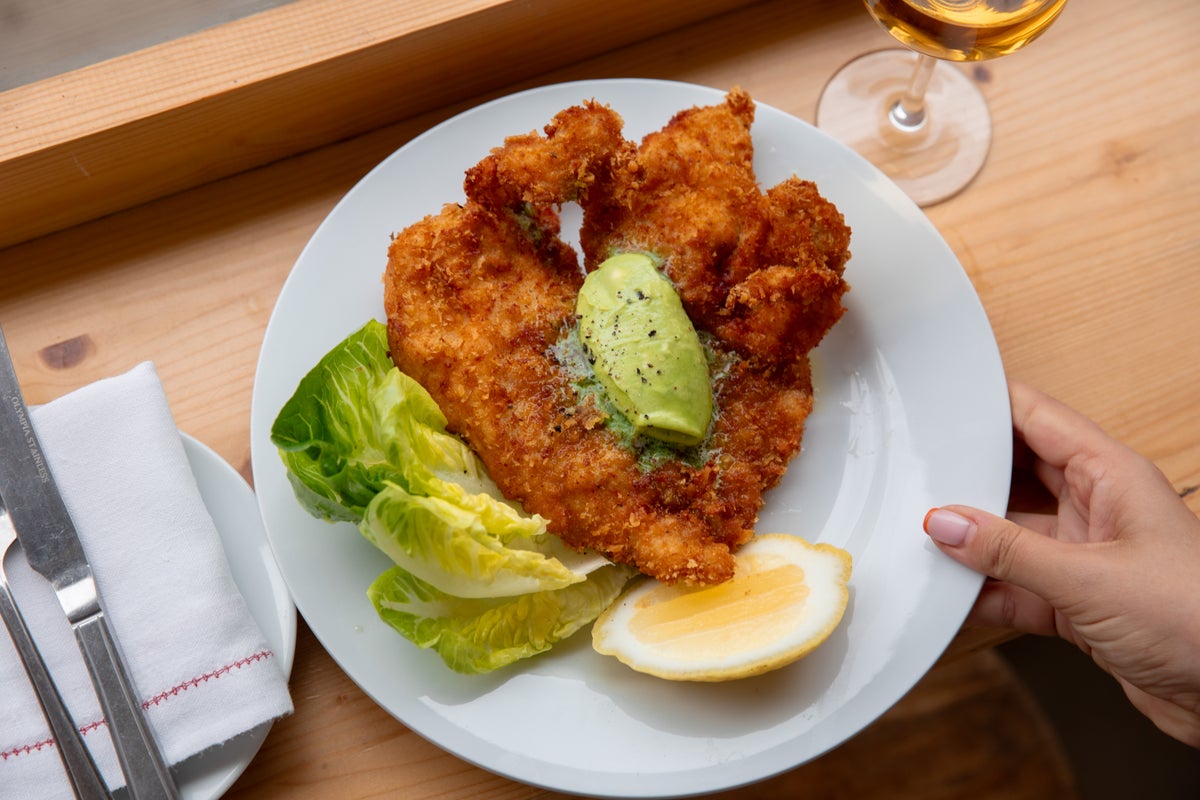The battle for culinary supremacy rages on as upscale comfort food threatens to redefine the very essence of home cooking, igniting a fierce debate over authenticity and elitism in our kitchens.
As the culinary world continues to evolve, the line between home cooking and restaurant dining becomes increasingly blurred. This phenomenon is vividly illustrated in the evolving landscape of comfort food, where nostalgia meets innovation. Chef Jemma Harrison, formerly of the acclaimed restaurant Camille, has taken the comfort food tradition and elevated it to new heights, creating dishes that are as sumptuous as they are familiar. Her creations—such as crisp schnitzel, silky bisque gnocchi, and golden latkes—are emblematic of a growing trend where restaurant-quality meals make their way into home kitchens, challenging the traditional notions of cooking.
The essence of comfort food is deeply intertwined with personal and cultural histories. For many, it serves as a gateway to childhood memories, evoking feelings of warmth and safety. However, as chefs like Harrison begin to reinterpret these classic dishes with upscale techniques and fine dining aesthetics, a debate arises: Does this transformation enhance the experience of comfort food, or does it strip away its authenticity, transforming it into something elitist and inaccessible?
Harrison’s journey reflects a broader trend within the culinary arts, where the quest for perfection often pushes skilled chefs to reinvent traditional dishes. This desire to elevate comfort food can be traced back to historical shifts in dining culture. In the past, comfort food was characterized by simple, hearty dishes made from local ingredients—think of a mother’s chicken soup or a grandmother’s meatloaf. These meals were often made with love, created in the spirit of nurturing and familial bonds.
However, as dining experiences began to shift in the late 20th and early 21st centuries, fueled by globalization and culinary innovation, the landscape changed dramatically. Chefs started to incorporate techniques and ingredients from around the world, creating a fusion of flavors and styles. This led to the emergence of a new genre of comfort food—one that is both familiar and avant-garde.
For instance, the crisp schnitzel that Harrison perfects is not merely a fried cutlet; it is a meticulous creation that showcases high-quality meat, a precise breading technique, and meticulous frying methods ensuring an exquisite texture. The silky bisque gnocchi she prepares pays homage to traditional Italian cuisine while incorporating modern culinary techniques that elevate its flavor and presentation. The golden latkes, typically a staple during Jewish festivities, are reimagined using artisanal potatoes and unique spices to create a dish that resonates with tradition yet speaks to contemporary palates.
The challenge lies in balancing innovation with tradition. As chefs harness their culinary prowess to create these elevated comfort dishes, they risk alienating those who hold dear the simplicity of the traditional recipes. This shift raises critical questions about the accessibility of food and the experiences associated with it. Is comfort food still comforting when it comes with a hefty price tag or requires specialized knowledge to replicate?
Moreover, the rise of social media has had a profound impact on how food is perceived and consumed. Platforms like Instagram and TikTok have brought visual storytelling to the forefront, influencing diners’ expectations and desires. Dishes that are visually captivating often gain popularity, leading chefs to focus on aesthetics as much as flavor. In this context, the elevation of comfort food may be seen not only as an artistic venture but also as a response to the demand for visually appealing and Instagram-worthy meals.
The cultural implications are significant. Comfort food has the power to connect individuals to their heritage, family traditions, and cultural identities. When reinterpretations of these dishes emerge from high-end kitchens, it can feel like a dilution of that connection. For many, food is not merely sustenance; it is a narrative woven into the fabric of personal and communal history. The risk of redefining comfort food through an elitist lens may lead to a disconnection from those narratives.
As more chefs like Harrison champion restaurant-level comfort food, the culinary world stands at a crossroads. The debate intensifies as both consumers and chefs grapple with the ideals of authenticity versus innovation. For some, the nostalgia attached to a simple bowl of mashed potatoes cannot be replaced by a gourmet version made with truffle oil. For others, the exploration of flavors and techniques represents a new frontier, one that honors the essence of comfort food while embracing culinary creativity.
This shifting dynamic presents an opportunity for chefs to both honor tradition and cultivate a conversation about what comfort food means in today’s society. It challenges home cooks to engage with their heritage while inviting them to explore new interpretations that can coexist with the familiar. Ultimately, the culinary landscape is enriched by this tension, as both tradition and innovation vie for prominence on our plates.
As the lines between home cooking and restaurant dining continue to blur, the future of comfort food remains uncertain. Chefs like Jemma Harrison are navigating this complex terrain, attempting to strike a balance between nostalgia and modernity. What remains clear is that comfort food will continue to evolve, reflecting the diverse tastes, experiences, and desires of those who create and consume it. The culinary dialogue surrounding comfort food is far from over, as it challenges chefs and home cooks alike to question their methods, ingredients, and ultimately, their definitions of what it means to feel at home in one’s kitchen.
Crisp schnitzel, silky bisque gnocchi and golden latkes – ex-Camille chef Jemma Harrison’s take on nostalgic comfort food proves restaurant-level cooking can still feel like home

